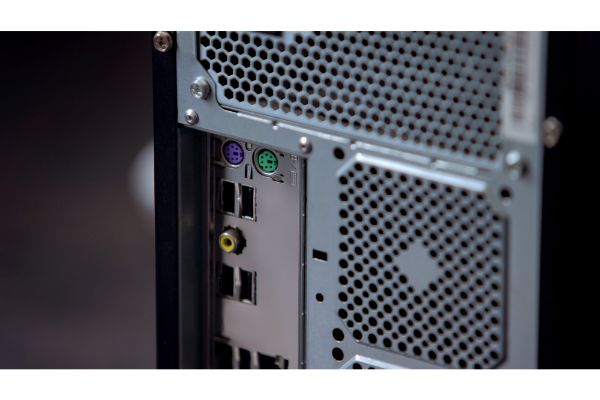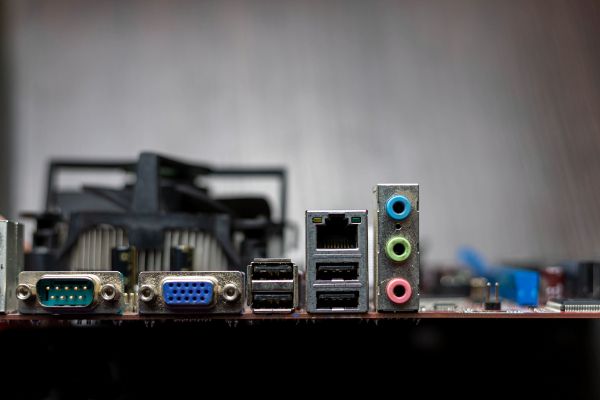Disclaimer: This post may contain affiliate links, meaning we get a small commission if you make a purchase through our links, at no cost to you. For more information, please visit our Disclaimer Page.
Modern computers are robust, and developers have, over the years, made sure they can handle several complex tasks at once. Despite all of their power, though, some components on a computer can be relatively fragile.
Many printed boards are thin, and they have delicate connections that make sure they can communicate with other parts of a computer’s hardware. In some cases, they’ll also have ports for accepting input/output connections from other devices, too. The motherboard is one such component, and it will usually have an IO shield that comes with it.
Some hobbyists who want to upgrade or change their motherboards might wonder if all of them on the market come with these IO shields as a standard part of their construction. We’ll cover this topic in our article below. We’ll also point out any possible differences between shields, what might happen if you don’t have or use one, and how these shields tend to be mounted on the computer case.
Table of Contents
Do All Motherboards Come With an IO Shield?
Yes, all motherboards should come with an IO shield. In most cases, motherboards that are somewhat older should come with IO shields as accessories that you will mount or install on the computer case as part of the whole installation process.
On newer motherboards, the IO shield is still present, but, often, it will come as a pre-installed part. There will still be some things you will need to do to set it up and align it with the case, but this may save you one or two steps.
All of this can vary by make and model, so it is best to check the specifications with the manufacturer before you’re making a purchase. If you do get a motherboard that doesn’t seem to come with an IO shield at all, your first step should be to check the manual.
Oftentimes, the manual will have a complete list of all the components that come standard as part of the motherboard’s setup. If an IO shield is mentioned somewhere in this list but not present in your package, you may need to contact the manufacturer. If your board is meant to come with a shield, a new one will still be under warranty and eligible for services that should include missing parts.
If you have purchased a board that was developed relatively recently, there is a good chance that the manufacturer has installed the shield as part of the makeup of the component already. Again, check the manual to see if there is any list of parts or a diagram that confirms this.
In either case, it is very unlikely that you’ll find any board today that doesn’t have a shield on it. Note, however, that this could still be a possibility if you want to purchase any kind of replacement board on the secondary market.
Do All Motherboards Have the Same IO Shield?
No, motherboards do not all use the same IO shield. The layouts of each shield will be different from one model to the next. They are dependent on the layouts of the connectors and other things that are mounted to the board itself, and these things change depending on how the developers have crafted each board within a model line.
The specific configurations for some of the inputs or outputs could be different, so the shields are different as well. Because one of the shield’s main purposes is to protect the inputs and outputs, the shield layout will need to accommodate the positions of these things.
That said, shield sizes tend to have the same outer dimensions. In this way, they are universal for fitting into computer cases themselves. Therefore, a user won’t need to worry as much about physical case size compatibility, particularly if they are purchasing a motherboard that is meant for the size of case that they have.
For example, if you purchase a second motherboard that is the same form factor as your previous one, the old IO shield should work for it in terms of size. This does assume that the layout is also similar enough to accommodate the shield, but it is possible.
What Happens if You Don’t Use an IO Shield?
There are a few things that can happen if you choose not to use an IO shield. Before we get into that, we’ll mention that some people like IO shields for aesthetics as much as protection.
The shield can help to make the back of the computer case look a bit tidier or more uniform. If this is important to you, you may want to use an IO shield for form as well as function. That said, there are a few things that can happen if you don’t use an IO shield:
1. It may be easier for input or output ports to get jarred or bumped unnecessarily. This could cause damage to the ports over time. If the ports sustain too much of this damage, you may need to replace the board itself.
2. On a related note, motherboards can be quite thin, and there can be a lot of flexing going on when you’re plugging or unplugging things. An IO shield can help to mitigate this flex, thus offering some measure of protection to the board’s sensitive components. Without this, it may be too easy to damage or crack the board accidentally.
3. The shield can protect against dust, debris, and other things that can get inside the case. Although it is not a given that you’ll deal with this a lot if you don’t have a shield installed, it can be helpful to hedge against this problem. Even some small insects might have an easier time getting inside your computer’s case if you don’t have the shield up.
4. Similarly, having airflow that is negative in pressure going through the case regularly makes it much easier for dust to get inside, and the IO shield can act as a barrier against this.
Is It OK To Have No IO Shield?
In most cases, you’ll find that people seem to prefer to have the shield. This is particularly true if it comes pre-installed as part of a newer board. However, it isn’t strictly necessary to have the shield.
Before you leave it out, though, there are a few caveats to consider. Namely, the environment in which you run your computer, and the kinds of accessories it uses.
If you have your desktop rig set up in a relatively clean, sterile environment that is as free of debris as it can be, you may find less of a use for an IO shield.
However, most homes or offices are going to deal with this to some extent, and it just makes sense to have the shield there. The other thing that you might need to watch for is the kinds of components you use.
We touched on the flexible nature of the boards earlier, and this becomes even more apparent if you are using heavy coolers or other components that can add a lot of weight. In these cases, putting the shield there as protection for the ports and the thin board will make even more sense. It comes down to a personal choice, but there tends to be more reasons to have the shield installed than not.
Do You Put IO Shield On From Inside or Outside of the Case?
You need to put on the shield from inside the case. There are a few reasons why you cannot install it from the outside. Firstly, it needs to attach itself to the inside of the case for support. The shields are not made in such a way that they can connect to the outer shell of the casing, and they will fall off if you try to do this.
Secondly, the way the case is built means that you need to pop the case in so that the cutouts line up with the required ports on the motherboard. The outer edges of the shield are designed for this, and the holes would not link up properly if you did it from the outside. For proper connectivity, only installing one from the inside of the case will work.
If you can’t seem to get your shield attached from inside the case, you may not be using enough force. The shield needs to pop into place. Although you should be careful, you’ll need to apply some pressure for this to happen. Additionally, you’ll want to install the shield before you screw down the motherboard, so make sure you don’t do these steps in the wrong order.
Conclusion
Motherboard IO shields are extremely useful yet simple components that can protect the ports on the board itself. They also guard against dust, and these reasons alone mean that they could help to prolong the life of your motherboard.
Although they are not strictly necessary, you can avoid much unnecessary stress or risk by just putting one in your computer’s case before you install the board itself. Form factors should line up, and you’ll just need to make sure that you have the proper shield for the layout of the board you choose.


